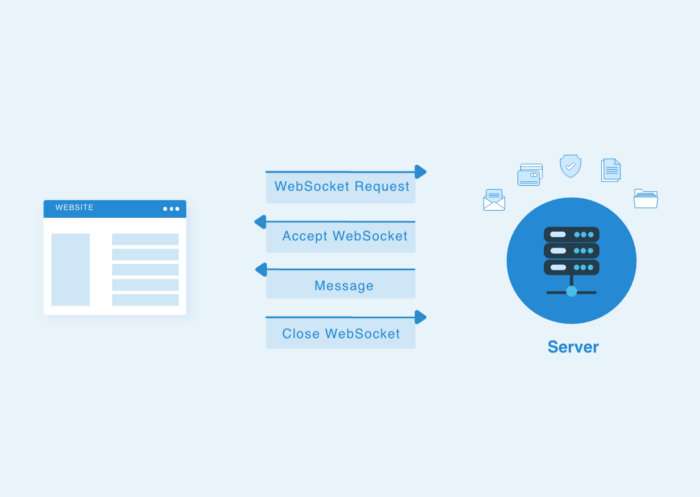
RESTful (Representational State Transfer) web services have become the cornerstone of modern web applications due to their simplicity, scalability, and interoperability. As these services facilitate data exchange between clients and servers, ensuring their security becomes paramount. A breach in the security of a RESTful web service can lead to unauthorized access, data theft, and even system compromise. In this article, we will explore the crucial security considerations for RESTful web services and discuss best practices to protect them from potential threats.
Authentication and Authorization
One of the fundamental security considerations for RESTful web services is ensuring that only authenticated and authorized users can access protected resources. Authentication verifies the identity of users attempting to access the service, while authorization determines the actions they are allowed to perform. Commonly used authentication mechanisms include OAuth, JSON Web Tokens (JWT), and Basic Authentication. OAuth is particularly popular for allowing third-party applications access without sharing credentials directly. JWT, on the other hand, provides a compact and self-contained way to transmit information between parties as a JSON object, securing the data with digital signatures.
SSL/TLS Encryption
To protect data in transit, RESTful web services should use SSL/TLS encryption protocols. Transport Layer Security (TLS) ensures that data exchanged between the client and server remains confidential and cannot be intercepted or tampered with during transmission. Implementing HTTPS (HTTP over SSL/TLS) ensures the communication is secure and mitigates the risk of man-in-the-middle attacks.
Input Validation and Sanitization
Proper input validation and sanitization are vital to prevent injection attacks, such as SQL injection and Cross-Site Scripting (XSS). Developers must validate and sanitize all incoming data to eliminate malicious code that could potentially exploit vulnerabilities in the application or its underlying database. Frameworks and libraries often provide built-in functions for input validation and sanitization, but it is essential for developers to use them correctly.
Rate Limiting
Rate limiting is an effective way to prevent abuse and brute-force attacks on RESTful web services. By limiting the number of requests a client can make within a specific timeframe, developers can prevent automated attacks that try various combinations to gain unauthorized access. Rate limiting can be implemented per IP address, user account, or API key, depending on the level of granularity required.
Cross-Origin Resource Sharing (CORS)
CORS is a security feature that controls which web origins are allowed to access a web service. It is crucial to configure CORS correctly to prevent unauthorized cross-origin requests. By explicitly specifying the allowed origins, methods, and headers, developers can prevent attackers from abusing the service from malicious websites and protect sensitive data from being leaked to unauthorized domains.
Session Management
If your RESTful web service requires maintaining sessions, it's essential to manage them securely. Session management involves creating, managing, and destroying user sessions to keep track of user activities and maintain stateful interactions. Developers should avoid storing sensitive data, such as passwords or personal information, in session data and use secure cookies or tokens to maintain session state securely.
Cross-Site Request Forgery (CSRF) Protection
CSRF attacks exploit the trust that a website has in a user's browser by tricking it into making unintended requests. To prevent CSRF attacks, developers should implement CSRF protection tokens in their web service. These tokens are included in each request and validate that the request was genuinely initiated from a trusted source.
Secure File Uploads
If your RESTful web service allows file uploads, it's crucial to implement secure file handling. Developers should validate file types, limit the allowed file sizes, and store uploaded files in secure locations with restricted access. Additionally, scanning uploaded files for malware and viruses can help mitigate potential risks.
Logging and Monitoring
Comprehensive logging and monitoring are essential components of any secure web service. Logs can help identify potential security incidents, track suspicious activities, and assist in forensic analysis in case of a breach. Monitoring tools can detect unusual patterns or spikes in traffic, indicating a possible attack in progress.
Regular Security Audits and Penetration Testing
To ensure the ongoing security of a RESTful web service, regular security audits and penetration testing should be conducted. External security experts can simulate real-world attacks to identify potential vulnerabilities and provide recommendations for improvement. Periodic reviews help keep the service up-to-date with the latest security practices and address emerging threats.
Conclusion
RESTful web services play a pivotal role in modern web applications, but their security cannot be taken lightly. Implementing robust security measures, such as authentication, encryption, input validation, and monitoring, is critical to safeguarding sensitive data and maintaining user trust. By following best practices and staying vigilant, developers can protect their RESTful web services from potential threats and ensure a secure and seamless user experience. Remember, security is an ongoing process, and continuous efforts are necessary to stay ahead of evolving cyber threats.




